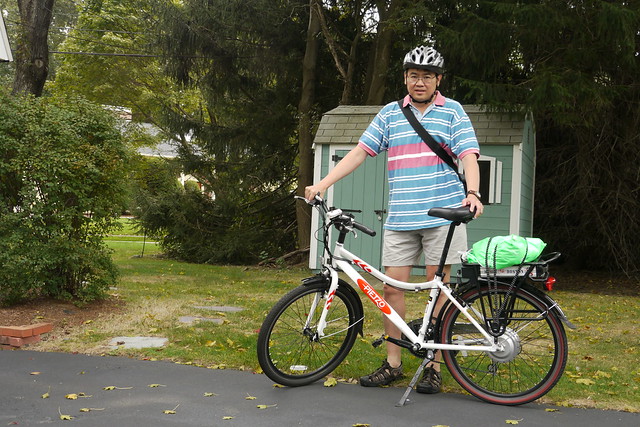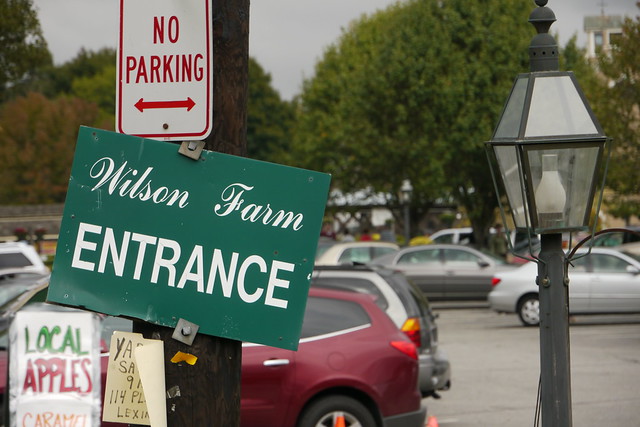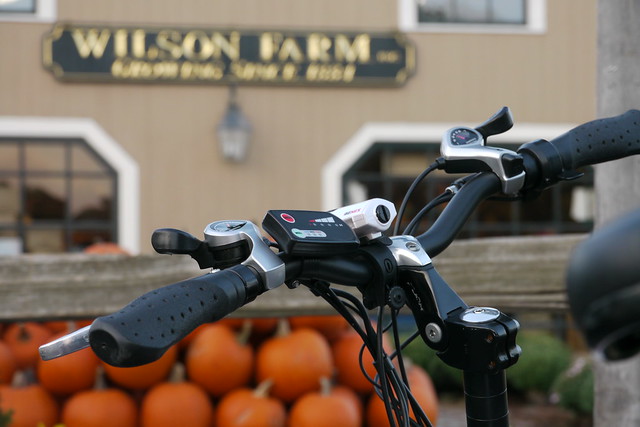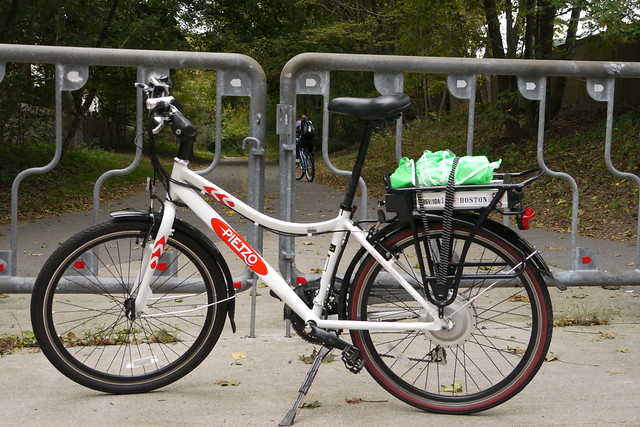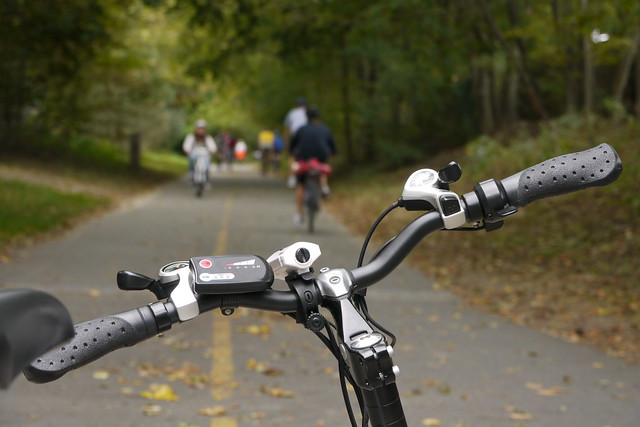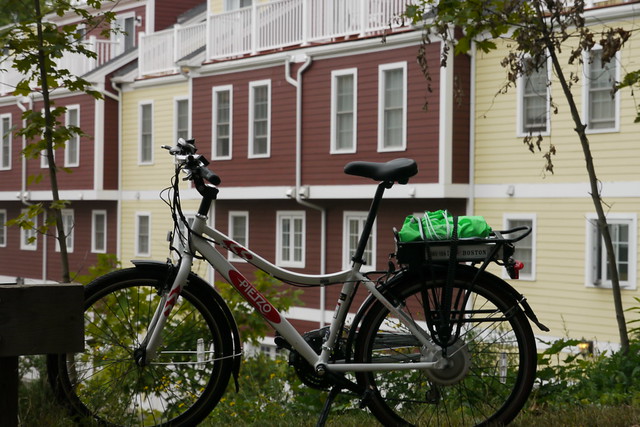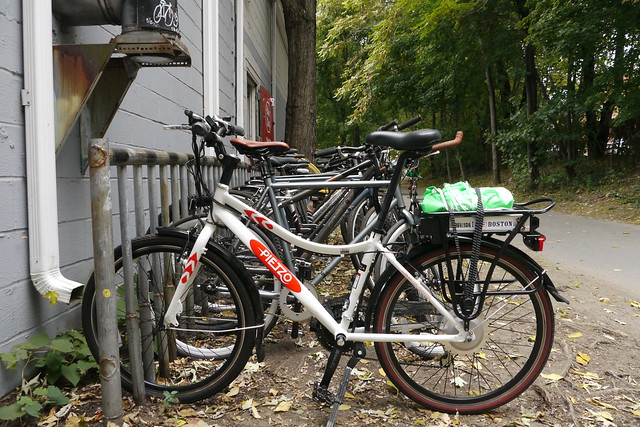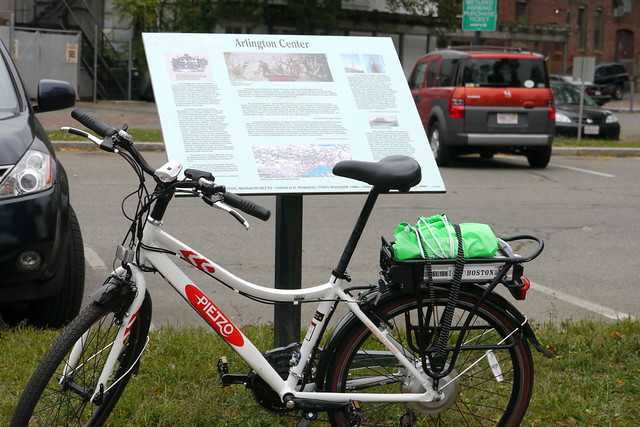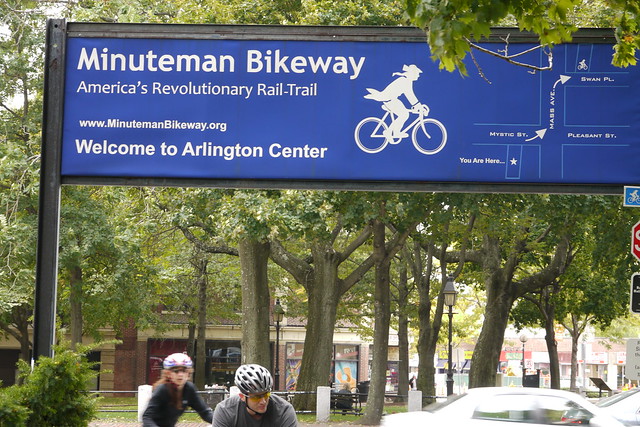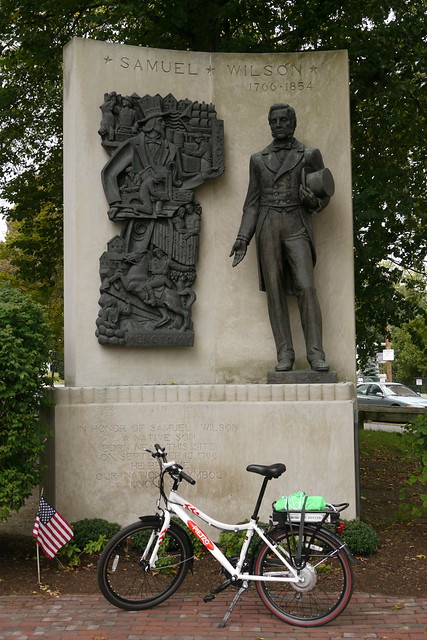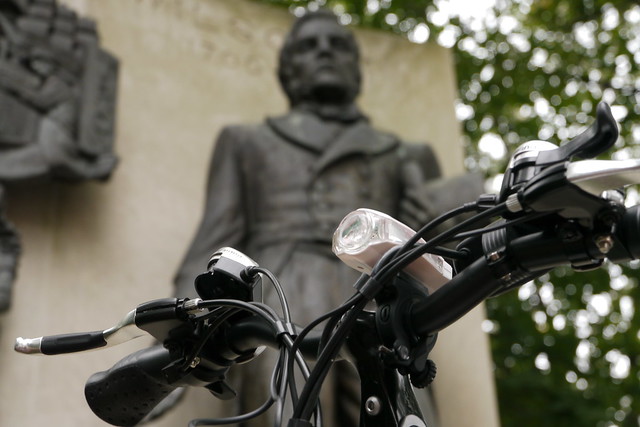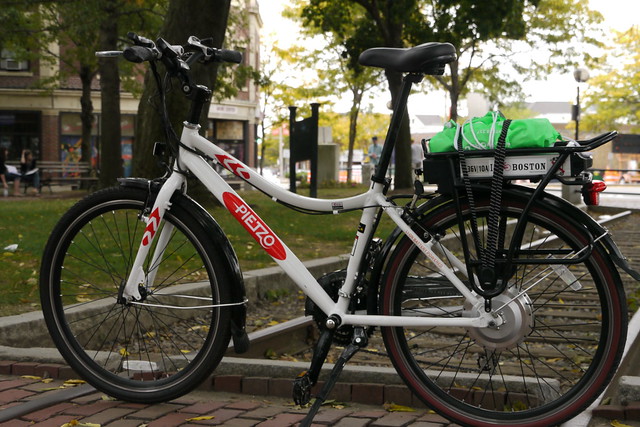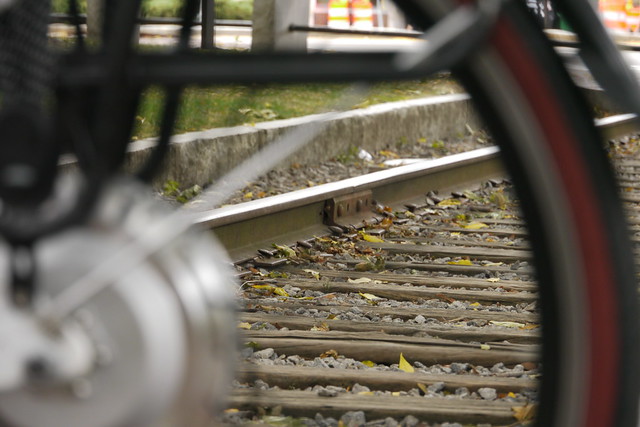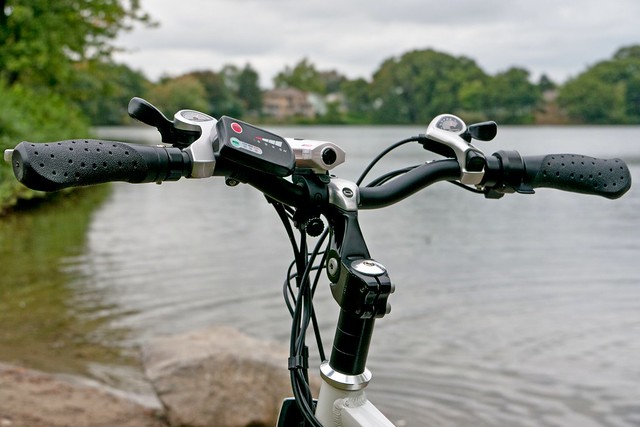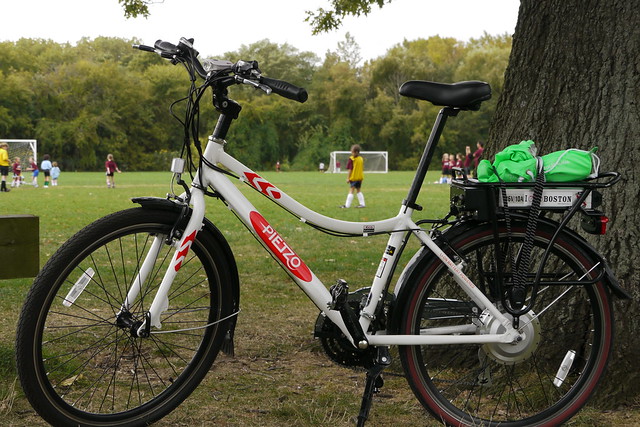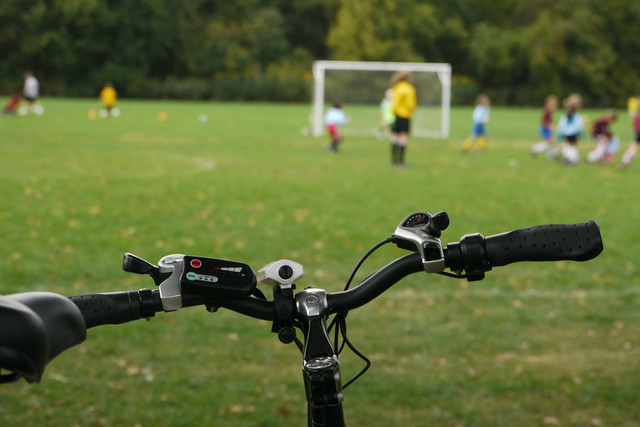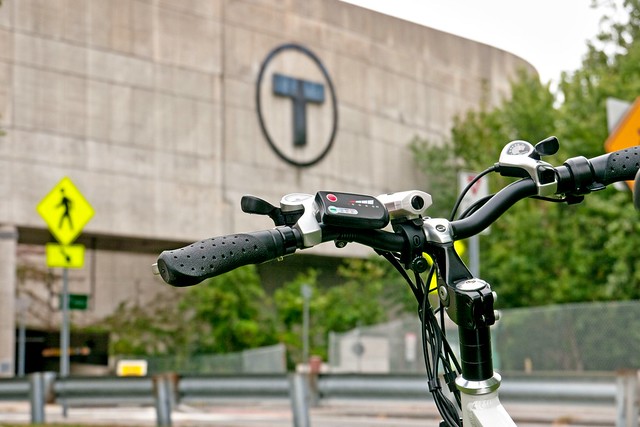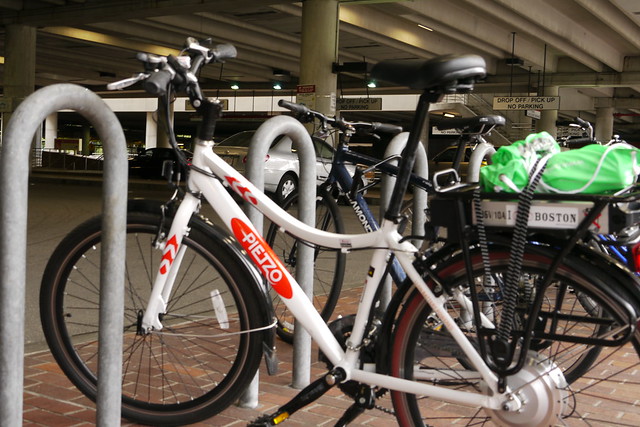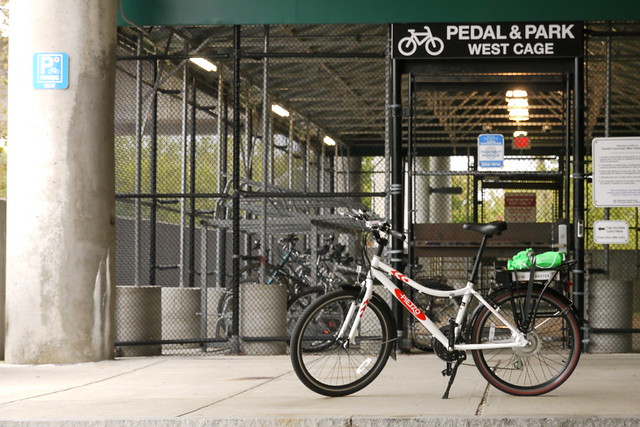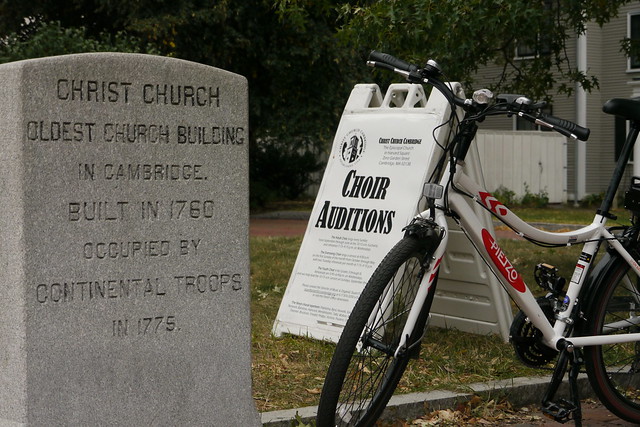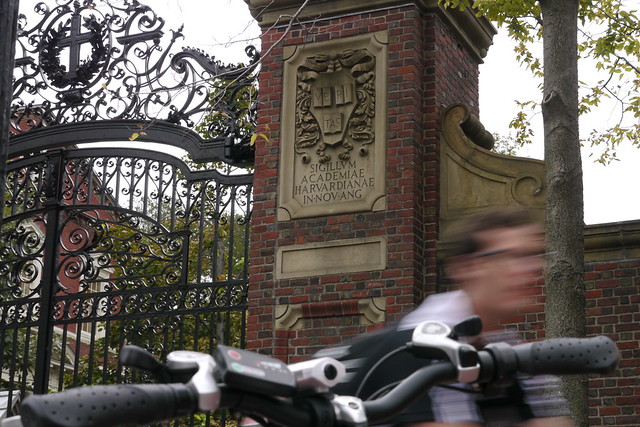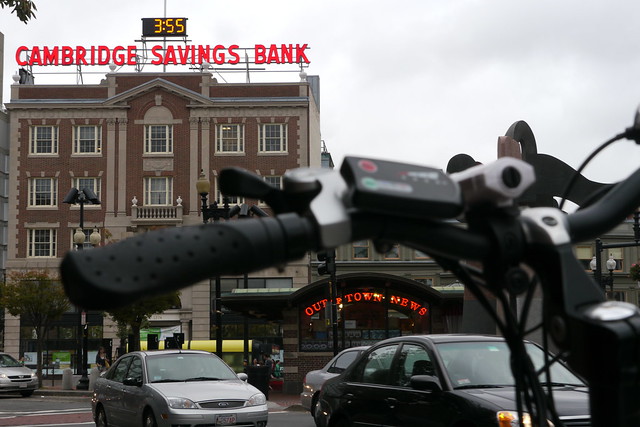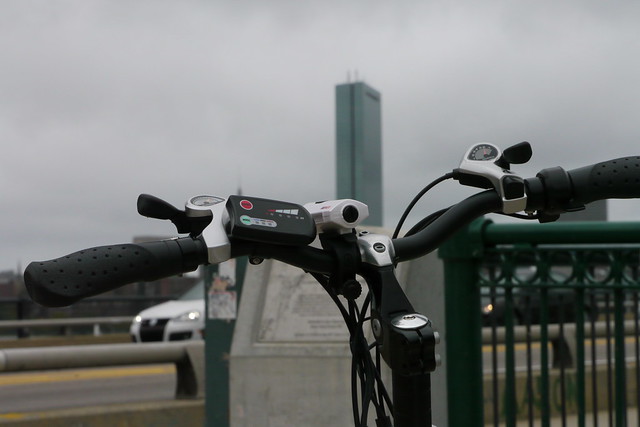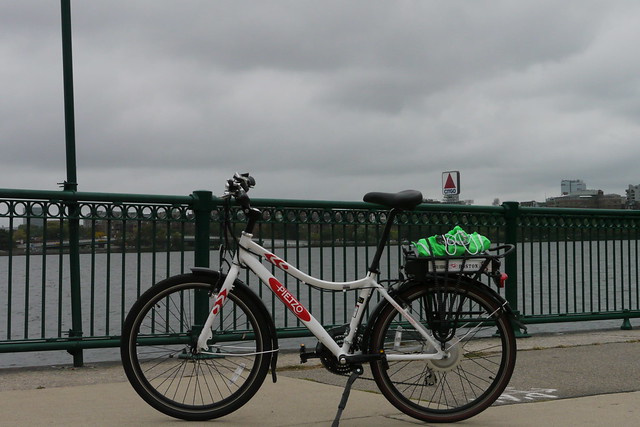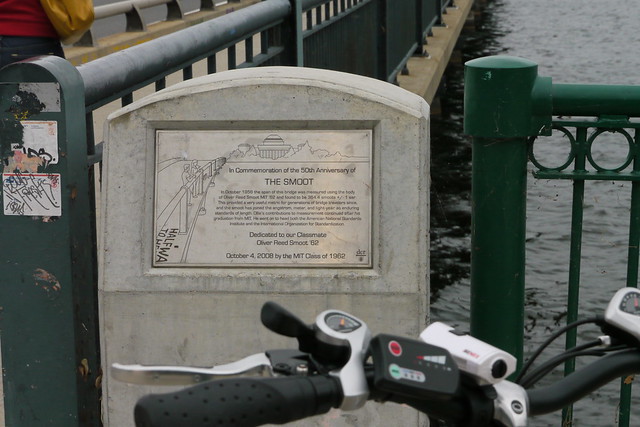Mile 0:
Below is yours truly getting ready for the trip. It was a cool 65F overcast day in the Boston area. Some rain was in the forecast so my raincoat was in that green bag. I am 6’2” and as you can see the bike frame is actually a tad too small for me. The saddle stem was at the maximum height. Other than that, I was good to go.
The route that I have chosen would take me to Alewife Station in Cambridge through the Minuteman Bikeway. From there, I planned to take Concord Ave towards Harvard Square and then Mass Ave to the MIT campus, and cross the Charles River on the Mass Ave bridge. After crossing the street, a left turn into Marlborough Street would bring me to the Boston Common. From there, I planned to go up Beacon Street to the State House, my final destination. Since the Pietzo has no odometer, the mile figures in this blog are just rough estimates.
Mile 0.5:
On the way to the Minuteman Bikeway, not far from my house, is Wilson Farm. This Farm sells a lot of fresh produce and is a favorite destination for many.
The Pietzo looks quite at home in this setting. With the optional basket, it makes the perfect vehicle for a quick Wilson Farm run.
Mile 1.0:
The Minuteman Bikeway runs parallel to Mass Ave in Lexington. You can enter it at many small streets off the avenue. This is the entrance at Fottler Ave in Lexington.
The Pietzo is pointed towards the wind, ready to go east on the Minuteman Bikeway.
As you can see, the bikeway is very popular during the weekend. People go there to walk, jog, bike, and roller-blade. Traveling east from Lexington to Arlington on the bikeway is very easy due to a slight downgrade. I made that journey with no power assist and rode the Pietzo as a regular, good old bicycle.
The Pietzo looks very much at home on the bikeway.
Mile 4.0:
Arlington Center marks the 4th mile of the journey. It has been a very pleasant ride sans-electric assist so far.
At Arlington Center, the Pietzo posed in front of the memorial for Samuel “Uncle Sam” Wilson.
The Minuteman Bikeway was built on a former railroad line. Here you can see a section of the old rails.
Mile 4.4:
A quick stop at Spy Pond gave some photo-op moments.
Mile 5.1:
At this point, we reached the Klondike Field which was bustling with a couple of soccer games. Since cycling is an outdoor sport, finding a bathroom can sometimes be problematic. At this soccer field there is a Port-a-Potty which is a welcome sight for cyclists.
I thought the white, red, black color scheme looked particularly striking here with the field as a backdrop.
Mile 5.8:
The Alewife T-station is the Northern terminus of the Red Line subway. It is equipped with plenty of bike racks and cages. You can park your bike here and take the subway into Boston and other destinations. This is also the end of the Minuteman Bikeway.
From Alewife, I traveled along Alewife Brook Parkway through two rotaries into Concord Ave. As there were some bridges to climb along this stretch, I turned on the power assist and the motor helped me go through them. Power assist was also very helpful along Concord Avenue towards Harvard Square.
Mile 7.8:
Harvard Square is another favorite destination in the area. The place is bustling with tourists, students and residents. The Pietzo is very much at home in Harvard Square.
Mile 10:
From Harvard Square, I rode along Mass Ave through Central Square and the MIT campus. Mass Ave is a busy street; however, on it there is a special bike lane with clearly marked lines. I felt very comfortable riding a bike on this stretch.
At mile 10, just after the MIT campus, was the Mass Ave Bridge connecting Cambridge and Boston at either side of the Charles River.
The Pietzo Journey specification does not mention its length. I wonder how long the bike is in Smoots unit.
Strong head wind would normally make crossing the bridge quite a challenge. Power assist, however, made it quite easy and enjoyable. At this point of the journey, the sky grew darker and it started drizzling. Therefore, I decided to pick up the pace
Mile 11.2:
After crossing the bridge into Boston, I turned left into Marlborough Street and rode it to the Boston Public Garden which was at mile 11.2. Inside the park, there was a sign prohibiting bike riding, so I simply walked the Pietzo to the other side of the park where Charles St intersects Beacon St. From there, a short, power assisted ride along the Boston Common brought me to the State House.
Mile 12.0:
The State House which is located at the North East corner of the Boston Common is on top of Beacon Hill. It was a fitting final destination for this power trip. According to Wikipedia, the State House was completed in 1798. At that time, long before automobiles and bicycles were invented, horse buggies roamed the Boston streets. As I place myself in the18th century setting, this picture with the Pietzo gazing at Segway-riding tourists reminds me of the Town Square scene from the movie Back To The Future.
As rain and darkness closed in, I started my journey home down the hill along Beacon Street. The Pietzo came with both front and rear lights which proved to be very handy in the waning light. The trip home was taken almost entirely with electric assist. My goal was to get home before night time. During these high speed runs, several times I had to stop hard. The Pietzo brakes did not disappoint. Going fast on an electric bike is quite exhilarating. Hills are not a problem anymore. The Minuteman Bikeway stretch between Alewife and Lexington is one long incline which normally takes quite an effort to climb. With the Pietzo, it was quite easy. Having said that, one fast alpha male biker actually passed me on the Bikeway going uphill. So a strong cyclist can actually go faster than I on an eBike. I was able to “keep up” with him in the sense that he stayed in sight a lot longer than he would if I were on a regular bike.
The journey home took considerably less time because I went as fast as I could and did not stop for photos. I got home before dark and after the 24 mile journey to Boston, the battery indicator said there is still 75% charge on the battery.
A couple of things I learned from this trip. First is that the Pietzo can take me to Boston and back on a single charge with plenty to spare. The ride was enjoyable and you still get exercise, the amount of which you can control by how much power assist you use. It is indeed a viable commuting alternative. Second is that the bike route from Lexington to Boston via Cambridge is quite good. A large part of it is on the Minuteman Bikeway. Much of Mass Ave has a designated bike lane.
It was indeed a very exciting adventure and I would like to thank the people at Pietzo for making the trip possible.
Related links:
Slide show of photos
